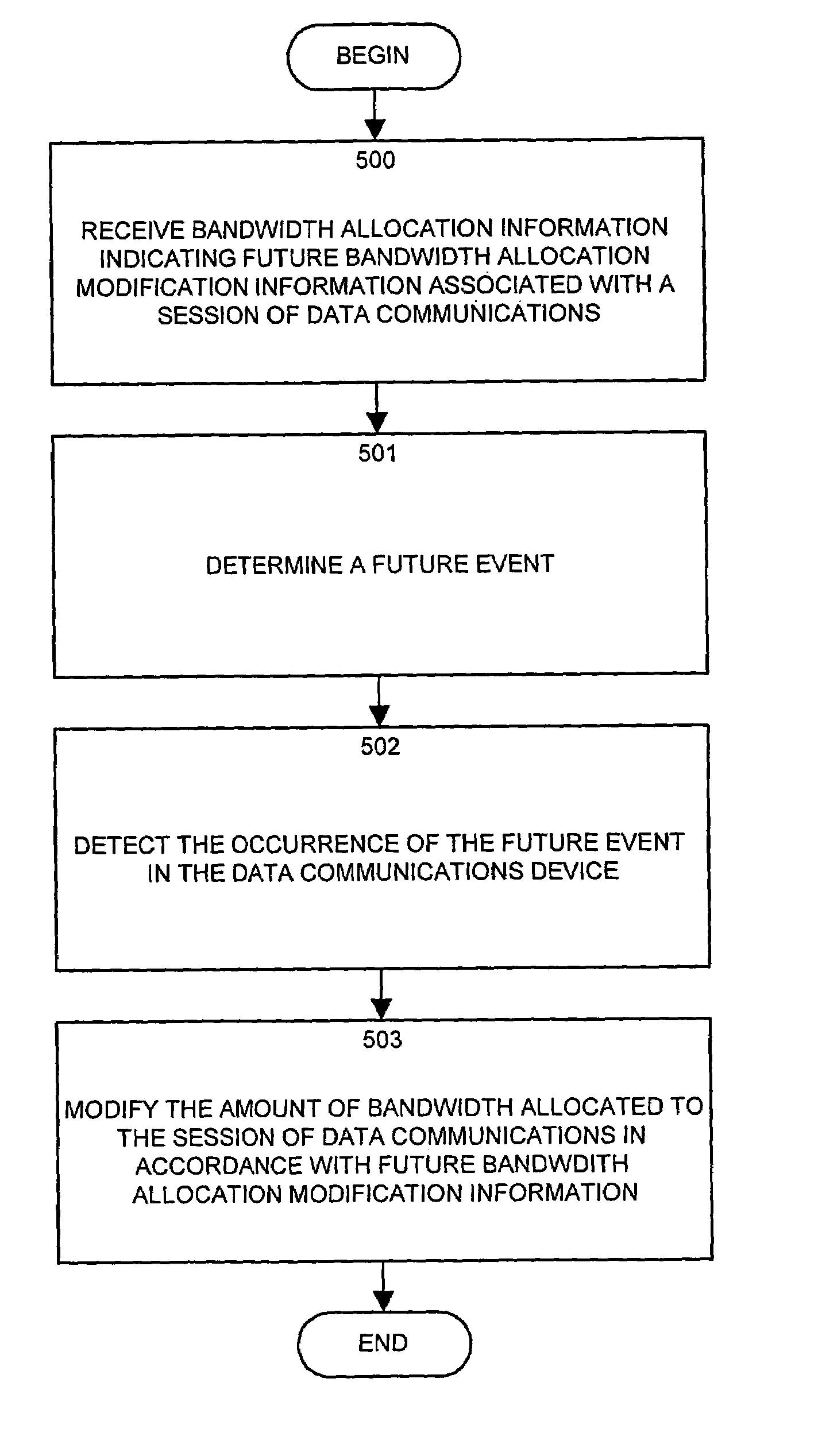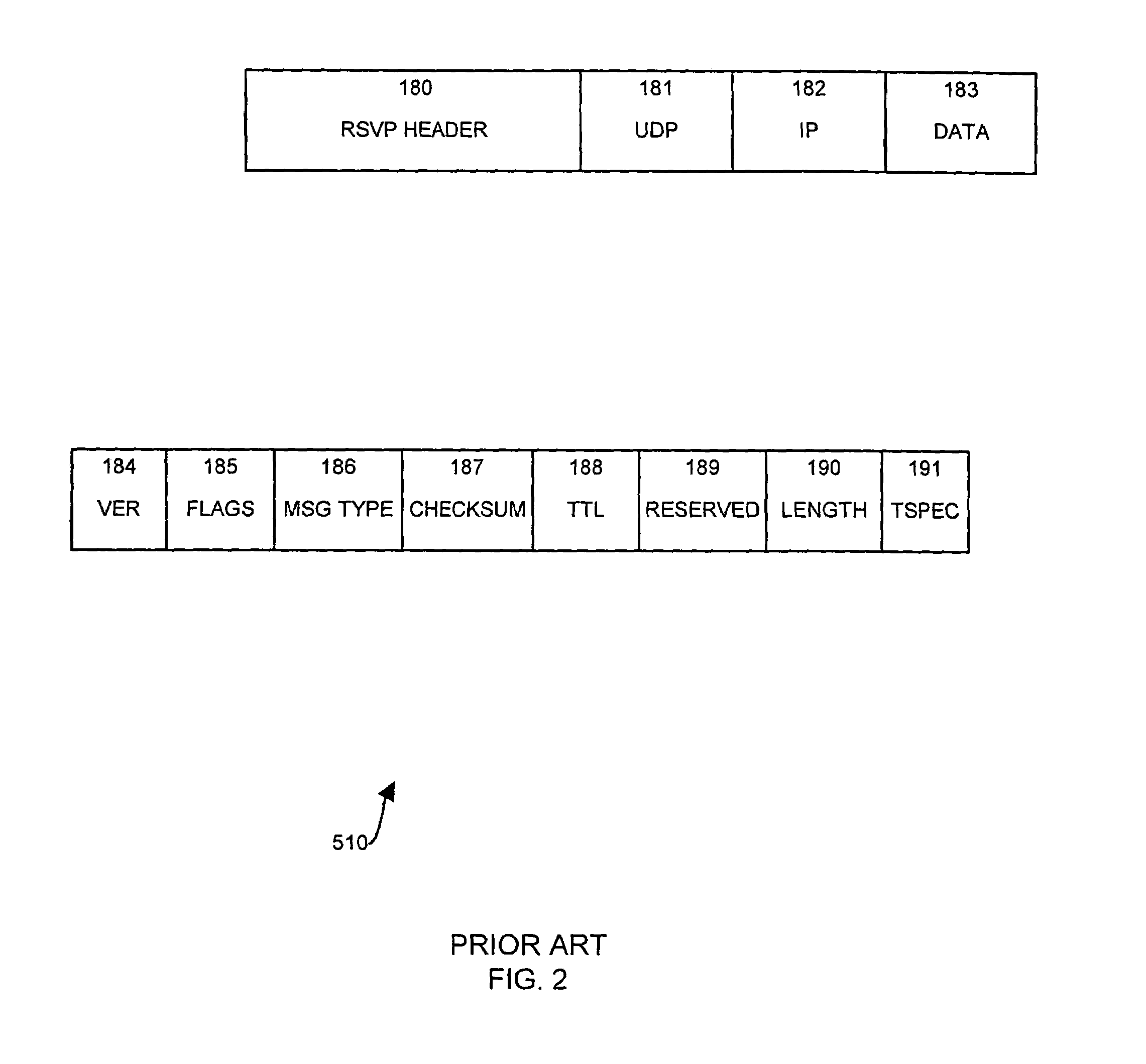Apparatus and methods for providing event-based data communications device configuration
a technology of event-based data and communication device, applied in the field of apparatus and methods for providing event-based data communication device configuration, can solve the problems of immediate bandwidth reservation, inability to specify the mechanism of rsvp, and limited current implementations of bandwidth or resource reservation protocol such as rsvp
- Summary
- Abstract
- Description
- Claims
- Application Information
AI Technical Summary
Benefits of technology
Problems solved by technology
Method used
Image
Examples
example 1
Time Driven RSVP Command with Modification Information
1>ON1>“MODIFY”2>ON2>
[0078]Such an extended RSVP command specifies to a network device 201 (i.e., to the bandwidth reservation processor 420) that at a time “TIME1” (as determined by clock 422), a session of data communication having session identification “SESSION-ID” is to have a bandwidth allocation configured according to RSVP TSPEC1, which specifies a data type, the path and an actual amount of bandwidth to be reserved. The remainder portion of the RSVP example message shown above further specifies that the reservation should be modified upon the future occurrence of the event TIME2 (i.e., a time of day or offset from the current time), and the RSVP TSPEC2 parameters should be used to properly configure (i.e., modify or adjust) the bandwidth reservation at that time TIME2. This command can also specify multiple time modifications, other than the single time-based modification shown in the example. When a data communications d...
example 3
Event Driven Bandwidth Reservation Command
1>ON1>“MODIFY”2>ON2>.
[0080]In either of the above examples of event driven modification, the RSVP command specifies an event EVENT1 or EVENT2, upon the occurrence of which the bandwidth reservation processor 420 properly reserves or modifies the amount of reserved bandwidth for one or more sessions of data communications. In the case of example two, the initial reservation is established at TIME1, and is modified upon the occurrence of EVENT1. In example three, the reserved data communications device resources (e.g., bandwidth) are initially reserved upon the occurrence of EVENT1, and are then modified upon the occurrence of EVENT2. It is to be understood that various combinations of times and / or events incorporated into any type of RSVP or other resource reservation operation within data communications devices is contemplated as being within the scope of this invention.
[0081]It is important to understand that a single command can be used to...
PUM
 Login to View More
Login to View More Abstract
Description
Claims
Application Information
 Login to View More
Login to View More - R&D
- Intellectual Property
- Life Sciences
- Materials
- Tech Scout
- Unparalleled Data Quality
- Higher Quality Content
- 60% Fewer Hallucinations
Browse by: Latest US Patents, China's latest patents, Technical Efficacy Thesaurus, Application Domain, Technology Topic, Popular Technical Reports.
© 2025 PatSnap. All rights reserved.Legal|Privacy policy|Modern Slavery Act Transparency Statement|Sitemap|About US| Contact US: help@patsnap.com



